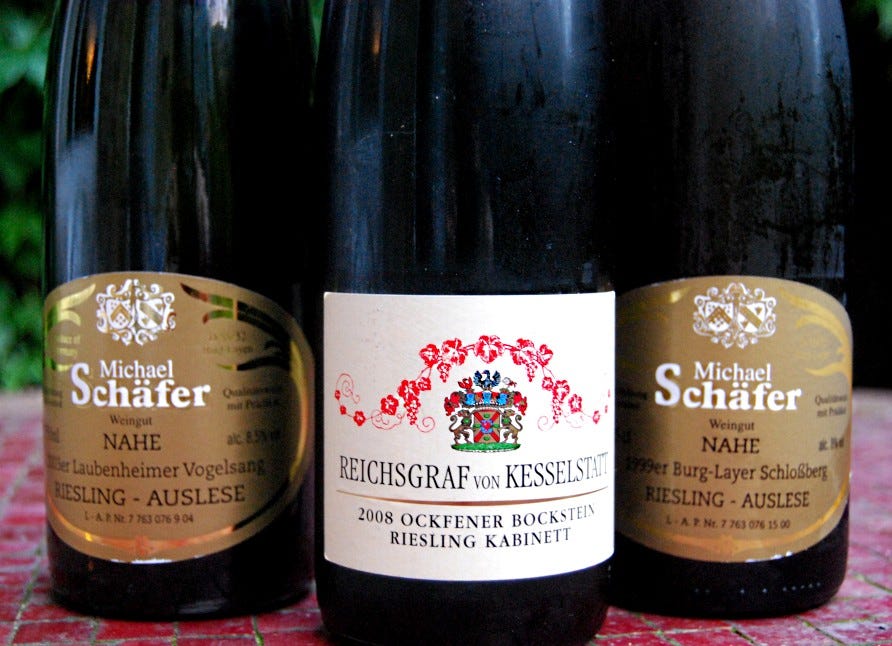A brace of Rieslings

Ockfener Bockstein, flanked by Ausleses
I'm not sure if there are collective nouns for different grape varieties - in general we talk about flights of wine, so why not a brace of Rieslings, a gaggle of Gewurztraminers or even a congress of clarets?
German white wines are often misunderstood in the UK, which is a shame in some ways (they are frequently wonderful, and deserve a better hearing) but not in others (prices remain ridiculously low relative to quality - the wines in this tasting all cost between £7.50 - £10 a bottle). Availability is another matter however, and for lovers of mature Rieslings, you've either got to buy them and lay them down, or keep an ear to the ground for the rare opportunities when they come up for sale.
Thus it was that I found myself hurrying onto the Majestic website just minutes after an email announcing a parcel of various wines from Michael Schäfer, a producer from the Nahe region. What got my attention was the vintages on offer: from 2008 all the way b…
Keep reading with a 7-day free trial
Subscribe to The Morning Claret to keep reading this post and get 7 days of free access to the full post archives.




